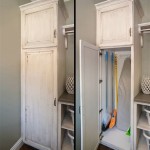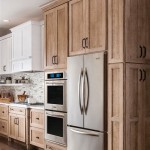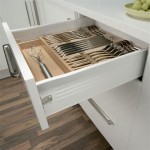What Colour Walls With Sage Green Kitchen Units: A Comprehensive Guide
Sage green kitchen units have gained immense popularity in recent years, offering a subtle, natural aesthetic that brings tranquility and sophistication to the heart of the home. This versatile color works well in a variety of kitchen styles, from modern farmhouse to minimalist chic. However, selecting the right wall color to complement sage green cabinets is crucial to achieving a cohesive and visually appealing space. The following provides a comprehensive guide to navigating the complexities of color pairing, ensuring a kitchen that is both stylish and harmonious.
The choice of wall color profoundly influences the overall ambiance of the kitchen. It affects the perception of space, light, and even temperature. When pairing wall colors with sage green units, several factors warrant consideration, including the specific shade of sage green, the amount of natural light the kitchen receives, existing architectural features, and personal preferences. A well-considered color palette enhances the beauty of the cabinets and creates a welcoming environment.
Understanding the Undertones of Sage Green
Sage green is not a monolithic color; it encompasses a range of shades, each with its own unique undertones. Some sage greens lean towards a cooler, more bluish-green, while others possess warmer, yellower undertones. Identifying the undertone of the specific sage green in the kitchen units is essential for selecting a complementary wall color. Pairing a cool sage green with a warm-toned wall color, or vice versa, can create a jarring visual effect. Instead, consider using color swatches next to the cabinets under different lighting conditions to accurately determine the undertones.
Once the undertones are identified, it becomes easier to narrow down potential wall color options. For sage greens with cool undertones, cooler wall colors, such as light blues, grays, or even other shades of green, can create a serene and monochromatic effect. For warmer sage greens, warmer neutrals, such as creams, off-whites, or light beiges, can bring out the depth and richness of the cabinet color. A careful assessment of the undertones prevents clashing and promotes color harmony within the kitchen.
Exploring Neutral Wall Color Options
Neutral colors are often the safest and most versatile choice for pairing with sage green kitchen units. They provide a backdrop that allows the cabinets to stand out while also creating a sense of spaciousness and light. However, not all neutrals are created equal. The key is to select a neutral that complements the sage green's undertones and enhances the overall aesthetic of the kitchen.
Off-white shades, such as cream, ivory, and eggshell, are excellent choices for creating a warm and inviting kitchen. These colors have subtle yellow undertones that pair well with warmer sage greens. They also reflect light effectively, making the kitchen appear brighter and more spacious. Grays, ranging from light dove gray to charcoal gray, offer a more contemporary and sophisticated look. Lighter grays work well with cooler sage greens, while darker grays can create a dramatic contrast with lighter shades of sage. Beige is another versatile neutral that can complement both warm and cool sage greens, depending on its specific undertone. Experimenting with different shades of neutral paint samples alongside the sage green cabinets helps in determining the most visually appealing combination.
Introducing Colors for a Vibrant Touch
While neutral walls provide a classic and timeless backdrop, incorporating colors can inject personality and vibrancy into the kitchen. When choosing colors, it's important to consider the overall style of the kitchen and the desired ambiance. Muted shades and complementary colors tend to work best with sage green units, creating a harmonious and balanced space.
Light blues and greens, similar in tone to the sage green, can create a calming and cohesive effect. These colors evoke a sense of nature and serenity, making them ideal for kitchens designed for relaxation. Pale yellows and oranges introduce warmth and energy into the space, complementing the natural tones of the sage green. These colors work particularly well in kitchens with limited natural light. Soft pinks and corals add a touch of femininity and sophistication, creating a unique and stylish kitchen. When incorporating colors, it's crucial to consider the intensity of the shade. Avoid overly bright or saturated colors, as they can overwhelm the sage green cabinets. Instead, opt for muted or pastel versions of the colors to achieve a balanced and harmonious effect.
Considering Lighting and Room Size
The amount of natural light a kitchen receives and its overall size significantly influence how colors appear. In kitchens with ample natural light, darker and more saturated wall colors can be used without making the space feel cramped or gloomy. Conversely, in kitchens with limited natural light, lighter wall colors are essential for maximizing brightness and creating a sense of spaciousness. The interplay of light and color impacts the visual perception of the room.
For smaller kitchens, light and airy wall colors are the best choice. These colors reflect light effectively, making the kitchen appear larger and more open. Avoid dark or heavy colors, as they can make the space feel claustrophobic. In larger kitchens, a wider range of wall color options is available. Darker colors can be used to create a cozy and intimate atmosphere, while lighter colors can enhance the sense of spaciousness. Also consider the artificial lighting in the kitchen. Warm-toned lighting can enhance the warmth of neutral colors, while cool-toned lighting can accentuate the coolness of blues and grays. Ensuring that the wall color complements both the natural and artificial lighting is crucial for achieving a harmonious and visually appealing kitchen.
Accent Colors and Textures
Beyond the primary wall color, incorporating accent colors and textures can enhance the overall design of the kitchen. Accent colors can be used on trim, backsplashes, or accessories to add visual interest and create a cohesive color scheme. Textures, such as textured paint, wallpaper, or tile, can add depth and dimension to the walls, complementing the smooth finish of the sage green cabinets.
Metallic accents, such as copper, brass, or gold, can add a touch of luxury and sophistication to the kitchen. These metals pair well with both warm and cool sage greens, adding a subtle shimmer and creating a focal point. Natural textures, such as wood, stone, or brick, can create a rustic and organic feel. These textures complement the natural tones of sage green, enhancing the connection to nature. Wallpaper with subtle patterns or textures can add visual interest to the walls without overwhelming the space. Opt for patterns that incorporate complementary colors or geometric designs to create a cohesive and stylish kitchen. When incorporating accent colors and textures, it's important to maintain a balance. Avoid using too many different colors or textures, as this can create a cluttered and chaotic look. Instead, focus on a few well-chosen accents that complement the sage green cabinets and enhance the overall design of the kitchen.
Testing Paint Colors: A Crucial Step
Before committing to a specific wall color, it's essential to test samples in the kitchen. Colors can appear differently depending on the lighting conditions, the surrounding colors, and the texture of the walls. Testing paint samples allows evaluation of how the color interacts with the sage green cabinets and the overall environment of the kitchen.
Paint small squares of the potential wall colors on different walls in the kitchen, taking into account areas that receive direct sunlight and areas that are shaded. Observing the colors at different times of the day and under different lighting conditions provides a more accurate understanding of how they will appear in the space. Also consider the existing elements in the kitchen, such as countertops, flooring, and appliances, and how they interact with the wall colors. Some paint stores offer small sample sizes of paint, which are ideal for testing colors without committing to a large quantity. If possible, paint a larger area, such as a piece of cardboard or drywall, and move it around the kitchen to see how the color looks in different locations. This method provides a more realistic representation of the color's impact on the space. Testing paint colors is an essential step in the design process, ensuring that the chosen wall color complements the sage green cabinets and creates a visually appealing kitchen.

How To Design A Sage Green Kitchen Wren Kitchens

Sage Green Kitchen Ideas Guide Kettle Co

Designhomes Pics Green Kitchen Walls Paint For Sage

24 Ideas For Sage Coloured Kitchens Houzz Ie

How To Design A Sage Green Kitchen Wren Kitchens

40 Sage Green Kitchen Cabinets With Paint Colors Jenna Sue Design

9 Exceptional Sage Color For Kitchen Walls Photos Contemporary Green Cabinets Renovation

40 Sage Green Kitchen Cabinets With Paint Colors Jenna Sue Design

Sage Green Kitchen Ideas Guide Kettle Co

How To Design A Sage Green Kitchen Wren Kitchens








